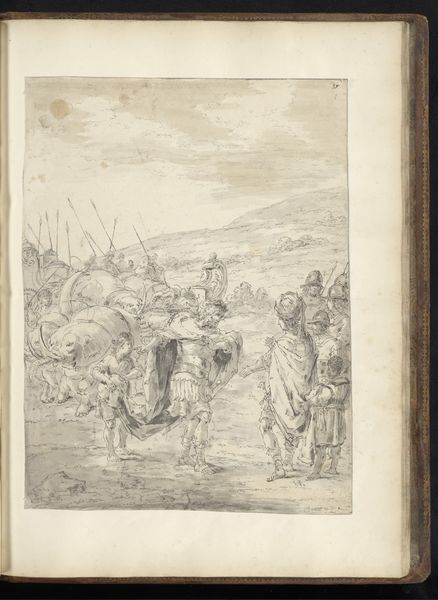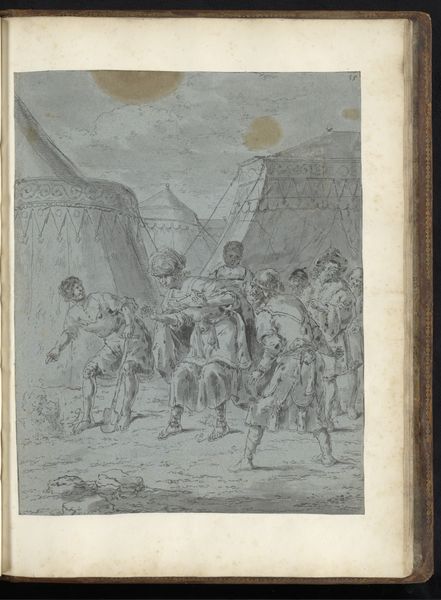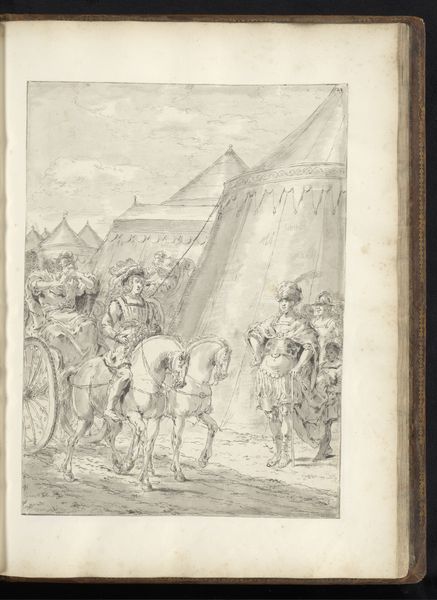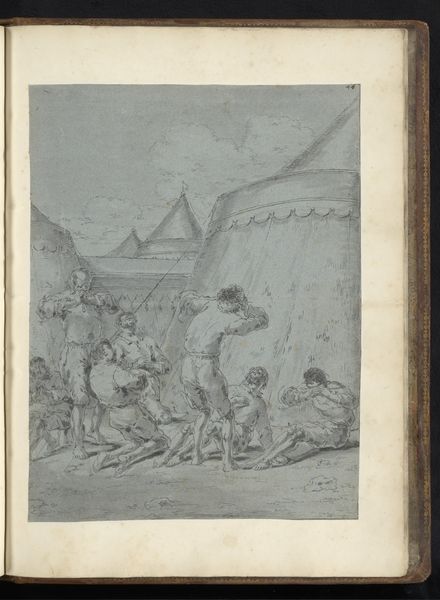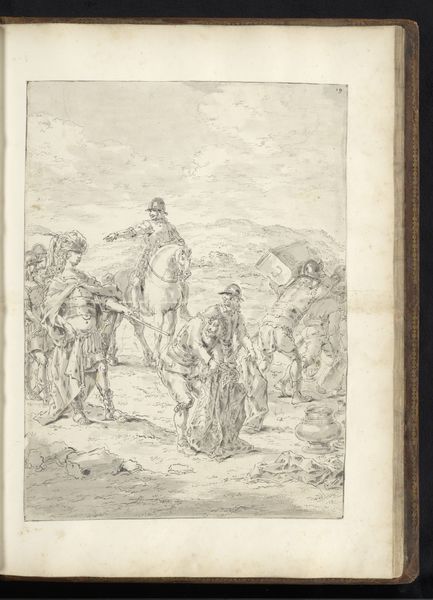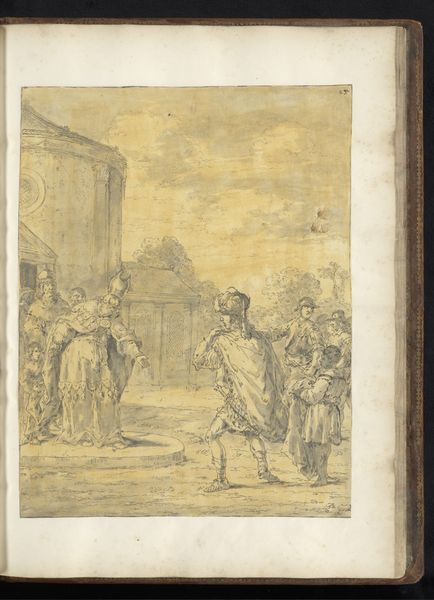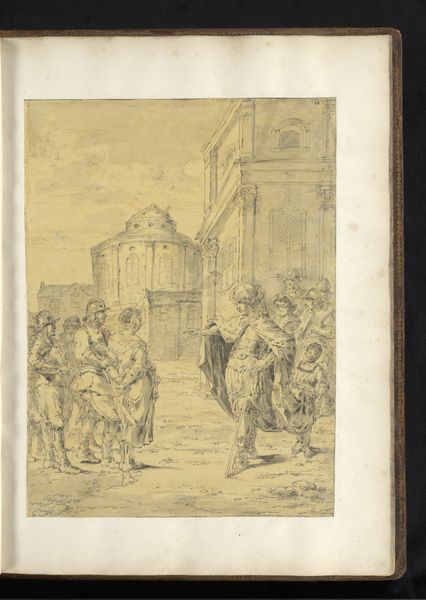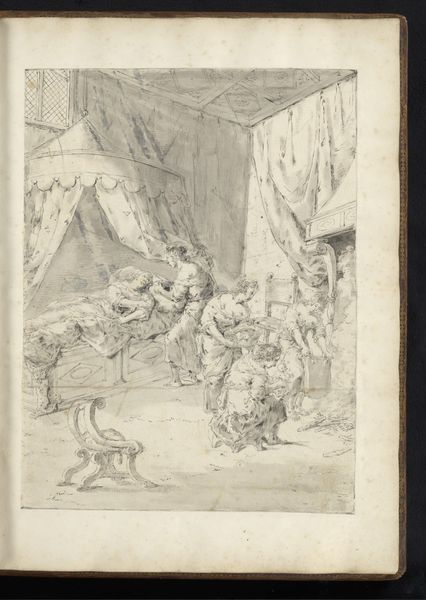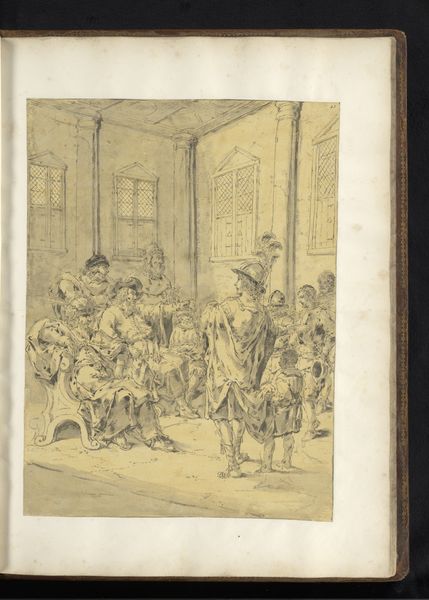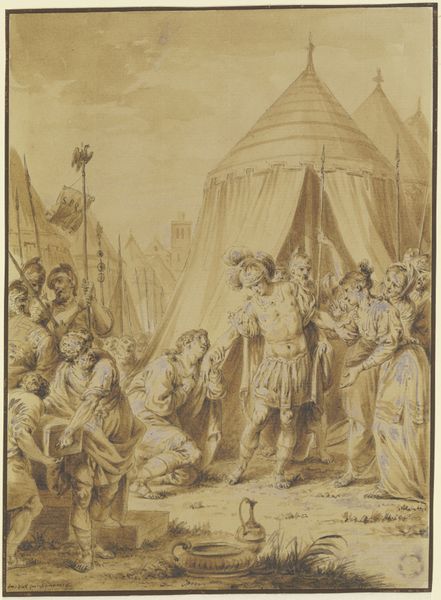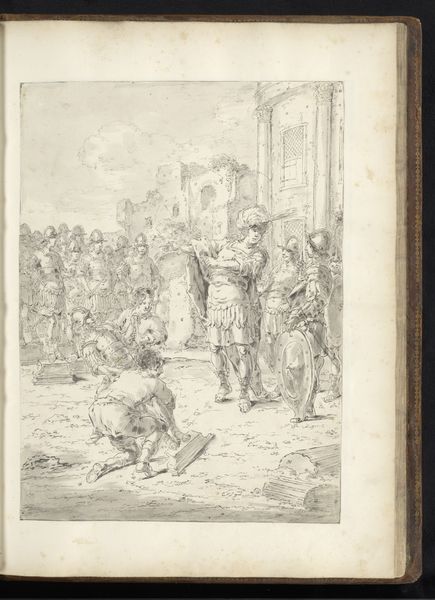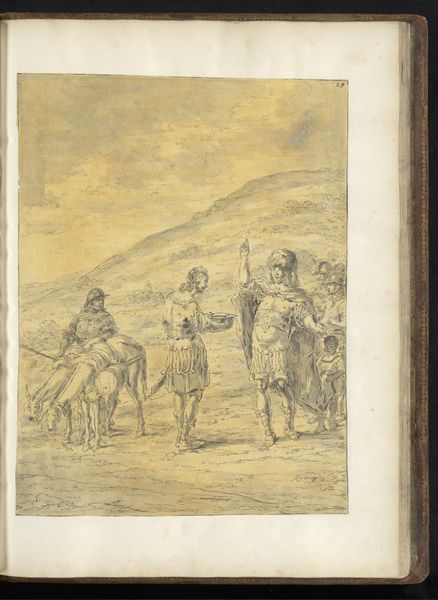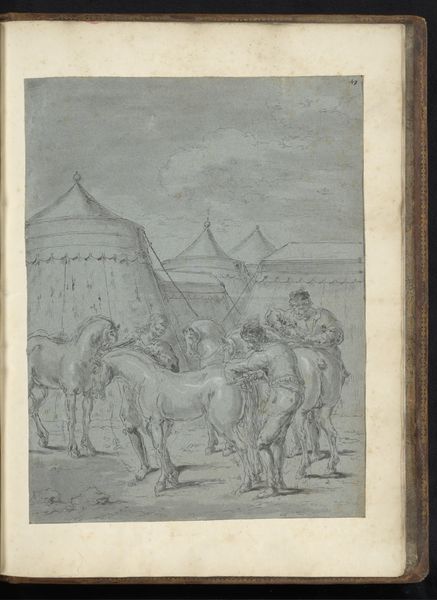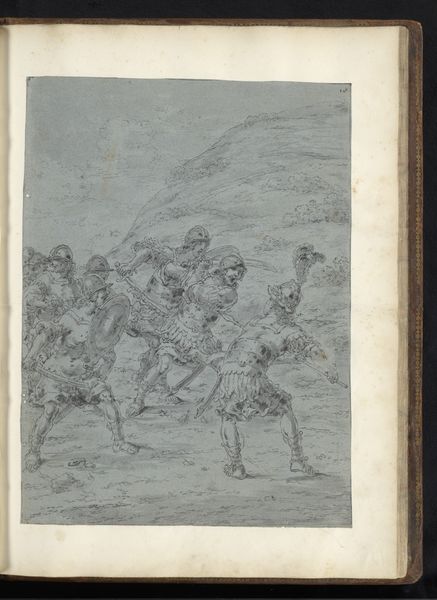
drawing, paper, ink, pencil
#
drawing
#
baroque
#
ink painting
#
figuration
#
paper
#
ink
#
coloured pencil
#
pencil
#
genre-painting
#
history-painting
Dimensions: height 416 mm, width 325 mm
Copyright: Rijks Museum: Open Domain
Curator: Before us we have a work by Leonaert Bramer, "Alexander de Grote ontvangt gezanten," created circa 1655-1665. It resides here at the Rijksmuseum. Editor: It feels almost theatrical, doesn’t it? A stage set with figures posed under the large tent. The grey wash is subdued but dramatic in its tonal range. Curator: Indeed. Observe how Bramer uses the wash to articulate the drapery of the tent and the garments of the figures, creating depth and volume. It's an exquisite demonstration of Baroque draftsmanship. Editor: I'm curious about the paper itself. Notice the grain and texture; you can almost feel the artist's hand moving across the surface. Was this drawing intended as a finished work, or more as a study for something larger? Considering the abundance of detail and use of valuable ink. Curator: A valid point. While some see this as a preparatory sketch, the level of finish suggests it could very well be a finished piece meant for discerning collectors. Consider the narrative depicted: Alexander the Great receiving envoys. Bramer has paid particular attention to the gestures and expressions, animating a historical event. Editor: That attention to detail raises questions for me about artistic production at the time. Who made the paper? Where did the ink come from? Did Bramer prepare his own materials, or rely on a workshop? These material realities profoundly influence the final image. Curator: Undoubtedly, access to materials shapes artistic practice, yet within this paradigm Bramer imposes his vision. Note the pyramidal composition, a sophisticated ordering device, leading the eye from the figures in the foreground to the tent and background. Editor: I keep circling back to the materiality. That tent, for instance, is rendered so realistically, you imagine the labour involved in creating and maintaining it, sheltering those powerful men within. Curator: An astute observation. And while the social dynamics of production and consumption frame the object itself, do consider how Bramer employs line and shadow to give form to abstract ideals such as power, diplomacy, and deference, all playing out across this deceptively small stage. Editor: Fascinating how focusing on materials opens a door to understanding the context and the people behind the work. Curator: A productive synthesis, revealing how technique and materiality intertwine in crafting compelling images that continue to resonate across time.
Comments
No comments
Be the first to comment and join the conversation on the ultimate creative platform.
